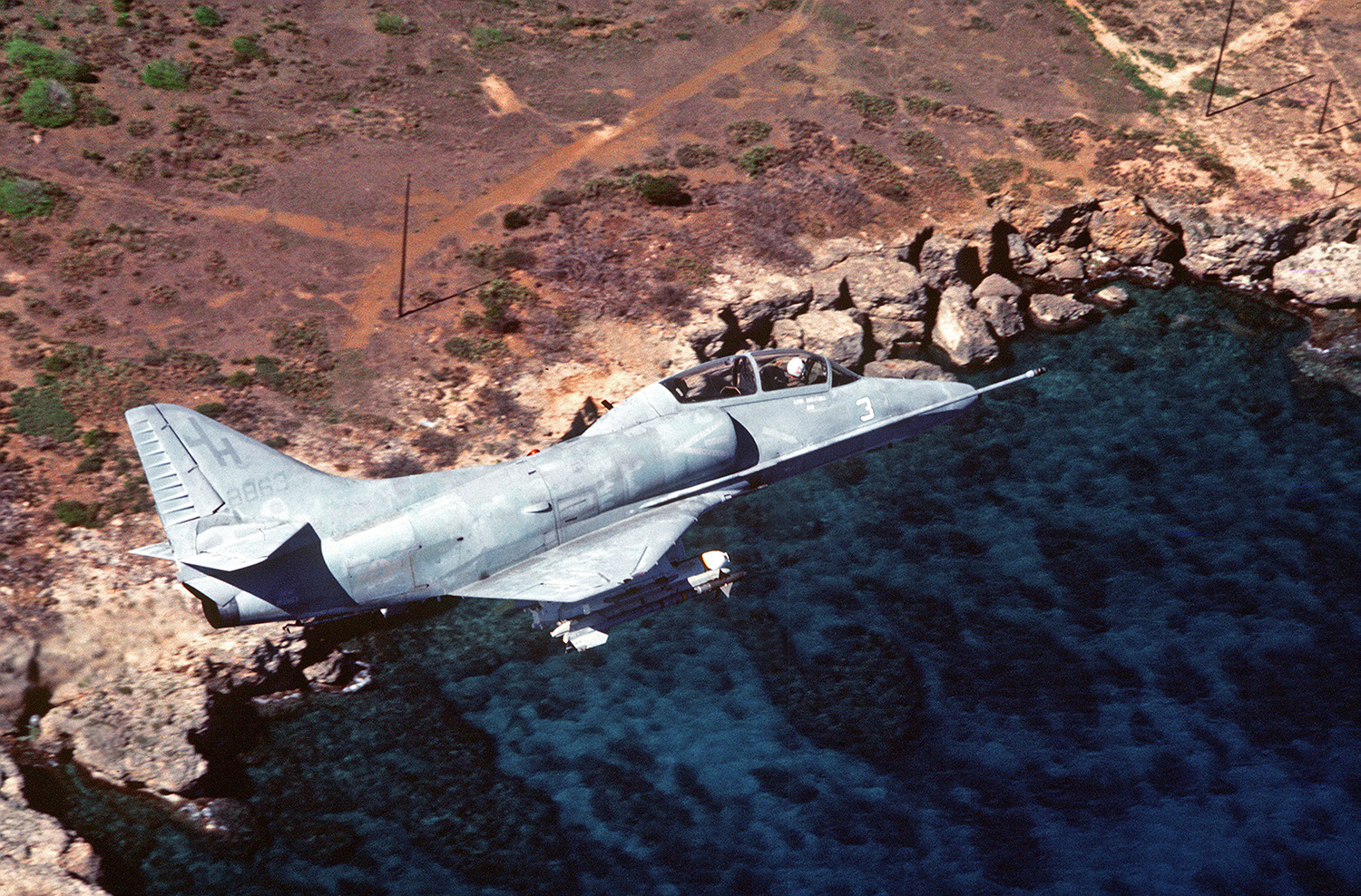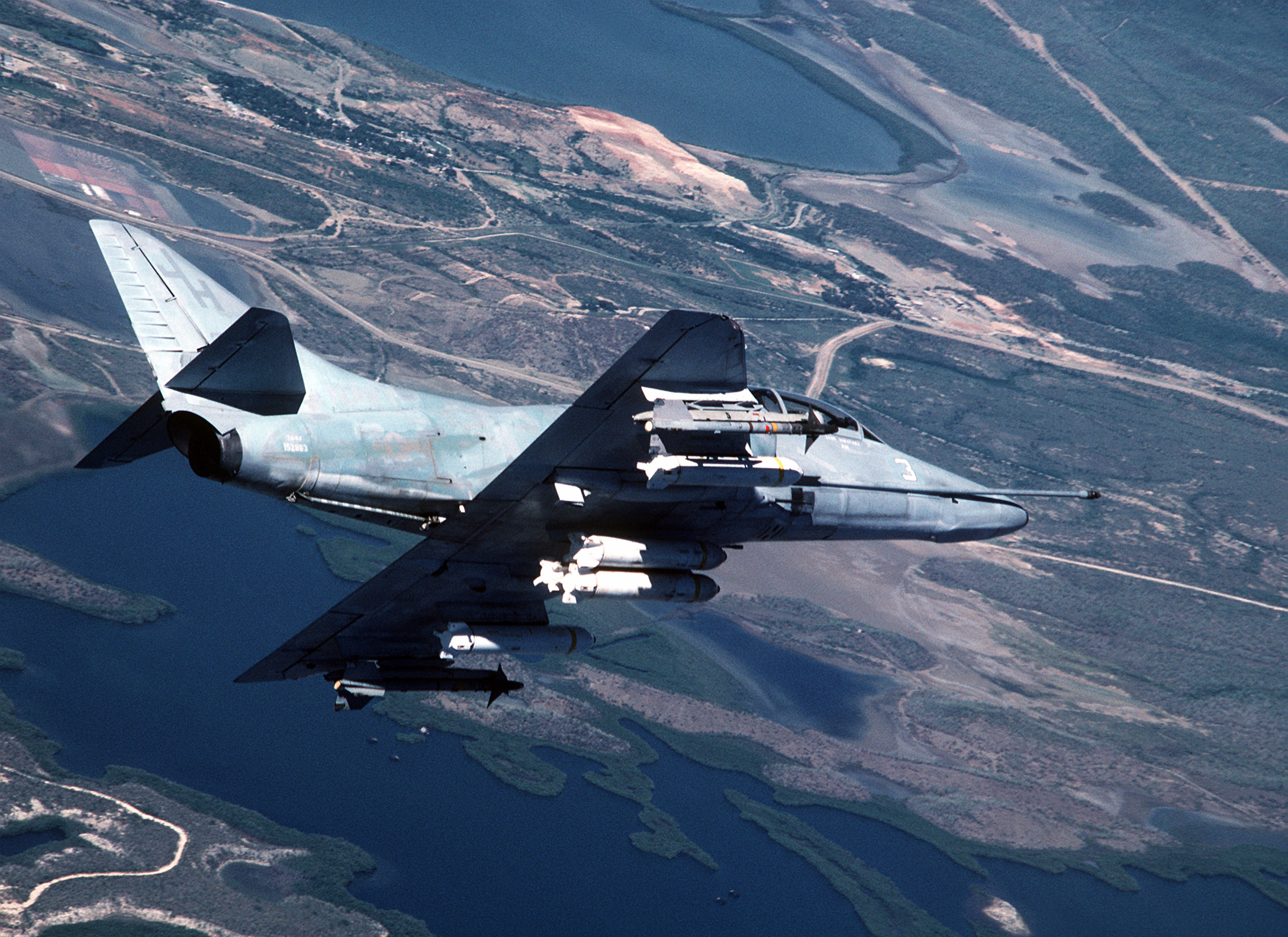America’s seemingly indefinite lease on Guantanamo Bay remains controversial, and the Castro family that continues to rule over Cuba is no fan of its existence. When most people hear the words Guantanamo Bay they probably think of America’s detention center there and the Global War on Terror, but during the Cold War the facility sat at what could have been the edge of World War III. Today the base is still quite active, although no tactical aircraft squadron calls Leeward Point Field at Naval Station Guantanamo Bay home, like VC-10 “Challengers” did up until 1993.
The Challengers trace their roots back to World War II, and during the dawn of the Cold War the squadron operated a slew of different aircraft—from flying boat patrol aircraft to jet fighters. Officially, the unit’s permanent tenure at Guantanamo Bay began in 1945 under the designation Utility Squadron 10, or VU-10. Their mission began to morph drastically following the overthrow of the Cuban government by Castro’s communist forces in 1959. Suddenly the unit was on the front lines of the Cold War, and its menagerie of target towing, cargo hauling and sea patrol aircraft was consolidated into a more potent force of F-8 Crusaders and S-2 Trackers. During the Cuban Missile Crisis, VU-10 was the closest American air combat force to what could have been the spark that set off a nuclear inferno. Luckily that spark never flew.

By 1965 the squadron was re-designated Composite Squadron Ten, or VC-10, and its roles were multi-fold. They were based in Guantanamo to support nearly constant fleet training exercises in the Caribbean, launching drones, towing targets, acting as targets themselves and as dynamic aggressors for ships’ combat systems operators and other naval aviators to train against. Secondly, they were tasked with the job of keeping an eye on nearby Cuban forces, and if need be, to keep them at bay until aerial reinforcements could arrive—a dubious task at best, a futile one at worst.
This mission was executed via regular reconnaissance flights, combat air patrols and air-to-ground training sorties. Close air support and interdiction training often saw VC-10 jets working in conjunction with special operations forces on the ground. At least two aircraft were armed and ready to fly in a matter of minutes at all times should the klaxon sound. During tenser times, many more of the squadrons jets would be on high alert or be in the air patrolling the tight airspace over and around the bay. It was intense stuff to say the least due to the incredibly close proximity to unfriendly forces.

Eventually the squadron’s F-8 Crusaders and S-2 Trackers gave way to A-4 Skyhawks, namely the TA-4J. This aircraft was the Navy’s advanced jet trainer through the last three decades of Cold War and was not known for its combat prowess, although it was popular with the Navy’s aggressor squadrons. A few other types of A-4s were also mixed into VC-10’s inventory sporadically, including TA-4Fs, and later on, EA-4Fs, the former of which was modified for electronic warfare aggressor duties.

Even though tensions on the island between the US and the Castro government had subsided a bit by the mid 1970s, VC-10’s secondary defensive mission was still needed. As such, the Challengers’ TA-4Js were somewhat special as they were outfitted for rudimentary combat—able to employ live munitions in combat should they be called upon to do so against marauding Cuban troops who had “jumped the fence.”

The Skyhawk flying Challengers executed this mission with 20mm cannon shells, cluster munitions, dumb iron bombs and AIM-9 Sidewinders being their primary arsenal. During the 1980s, under President Reagan’s expansion of the US Navy, VC-10 was in more demand than ever for adversary support duties. The unit’s Skyhawks were constant players during carrier battle group workups and large exercises in the region, alongside their aggressor counterparts VC-8 based at NAS Roosevelt Roads on the island of Puerto Rico.

Following the collapse of the Soviet Union and as part of the drawdown of US forces across the globe, VC-10 was formally disestablished in 1993. The Challengers’ exit from Guantanamo Bay marked the last time a permanent fixed-wing tactical aircraft unit was based there. It also marked the beginning of the last decade of Skyhawk service within the Pentagon’s inventory.





Contact the author: Tyler@thedrive.com
